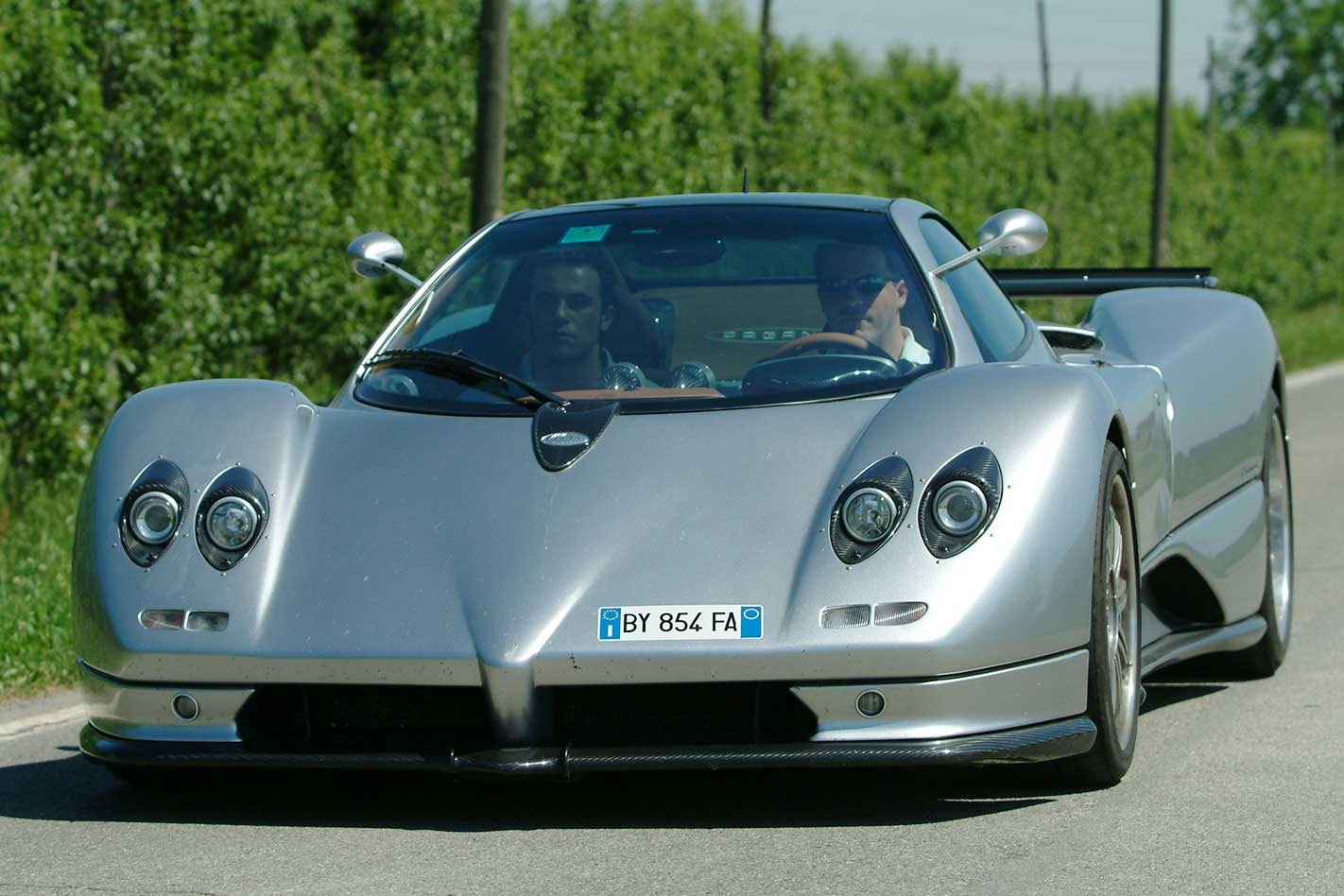Pagani Zonda. The stuff of dreams. But today is a special day – we’ve been given just 30 minutes in a $1.2 million supercar.
This feature was originally published in MOTOR’s December 2004 issue
Beyond the specs, we soon discover a curious speed warning device that isn’t in the brochure. Nail the throttle in second gear and a high-pitched roar erupts from behind, as a 414kW V12 turns scenery into streaks and makes far very near.
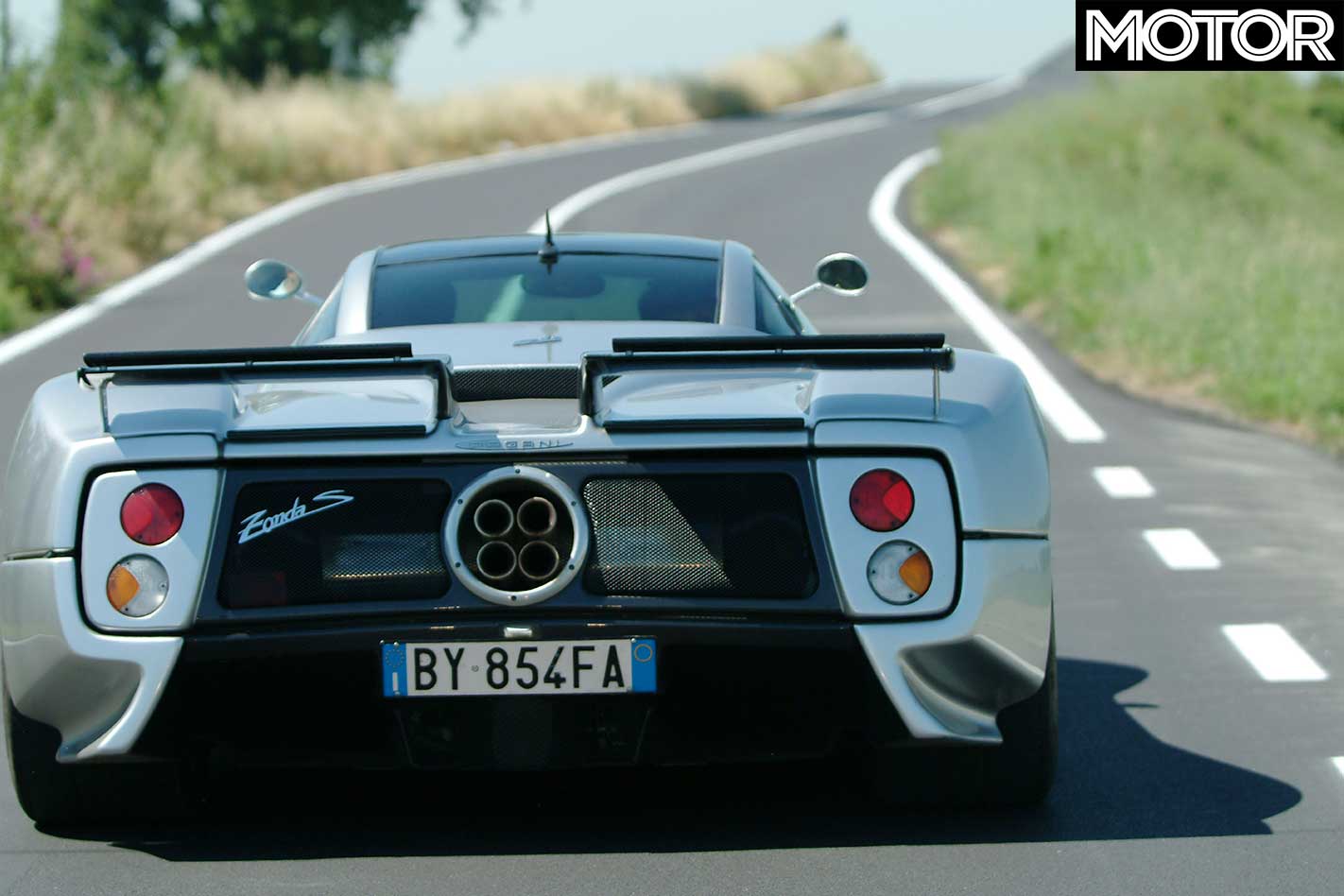
A scan of the road ahead reveals nothing but sunshine, a clear road and not another soul… he notices my inquisitory sideways glance, grimaces, and half apologises: “Sorry, I am a nervous passenger. This is my baby, and I get very nervous.” Quite understandable.
Pagani’s Zonda C12 S is, after all, a rare species. One-point-two million dollars. Say it fast and it’s easy to dismiss, but after a day touring the factory, watching the handful of Italian women carefully cut and brush the resin into the carbon fibre weave before baking it in the on-site autoclave, there is some weird sense of value in that figure. This is truly one of the world’s finest, fastest, fantastic supercars.
The Zonda runs a V12, like a Murciélago, but at 7.3-litres it’s more than a full litre larger. Its 414kW may be 12kW down on the Lambo, but its 750Nm is 100Nm more than both the Lambo and a V12 Ferrari Enzo. And the Zonda weighs the same as an Astra SRi Turbo, with a power-to-weight ratio tiny enough to make a Gallardo owner go gaga.
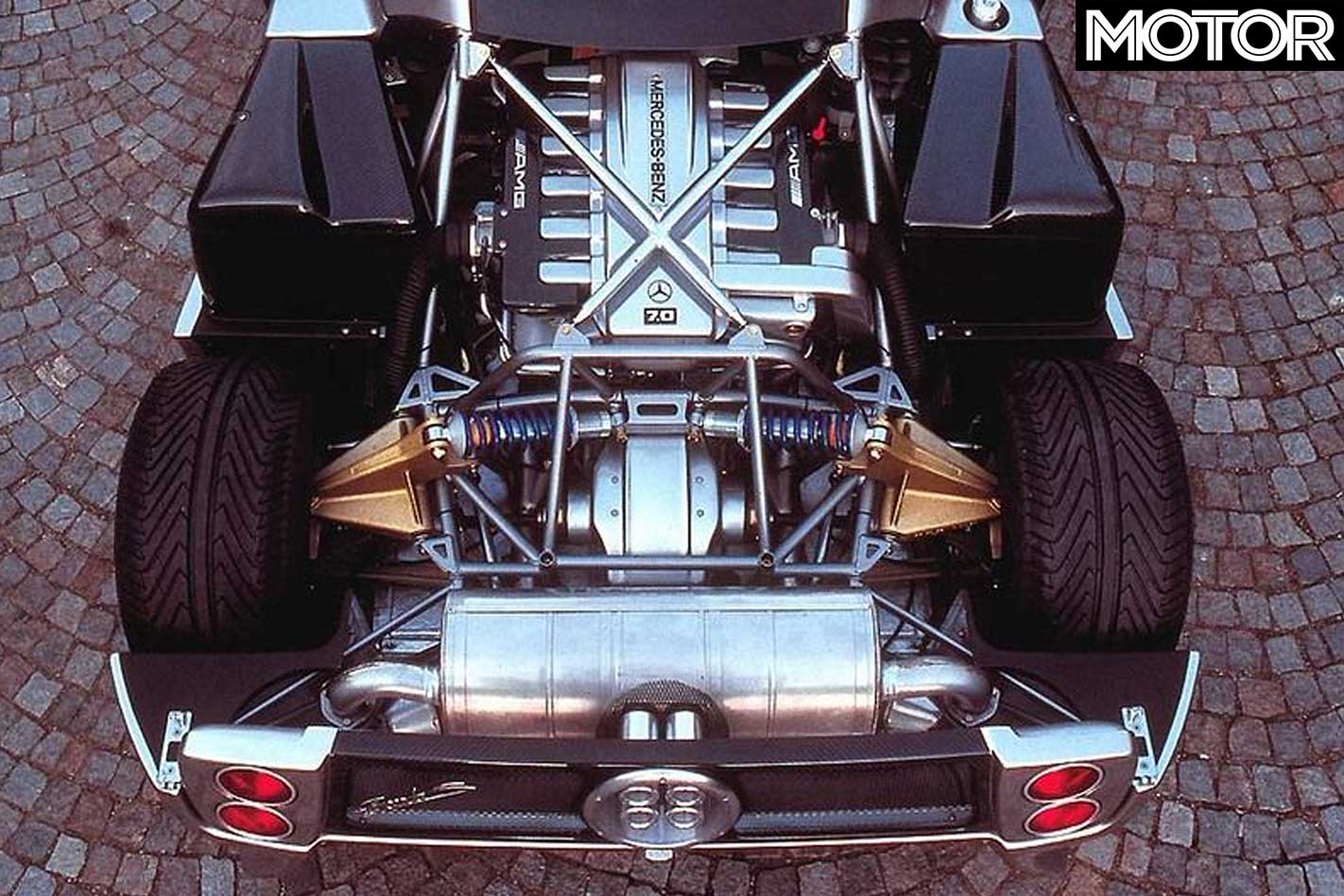
Named after the slight, jockey-like founder, Horacio Pagani, the Zonda was called the Fangio in design stages, after Pagani’s idol and friend Juan Manuel Fangio. But following Fangio’s death in 1995, out of respect, Pagani changed the car’s name to Zonda, after an Argentinean Andean wind.
In this small factory in Italy, not far from Ferrari, is Modena Design, where the 3200 individual, mostly specifically made parts come together: like the 130 parts of carbon fibre – including the 70kg bare, flat-bottom monocoque chassis – to the doors, console, roll-cage incorporating frame, engine cradle and wiper cover, every line of carbon fibre weave is matched and aligned over the panel gaps to form a V down the middle and across the entire car. It’s simply the most perfect carbon fibre this side of an F1 car.
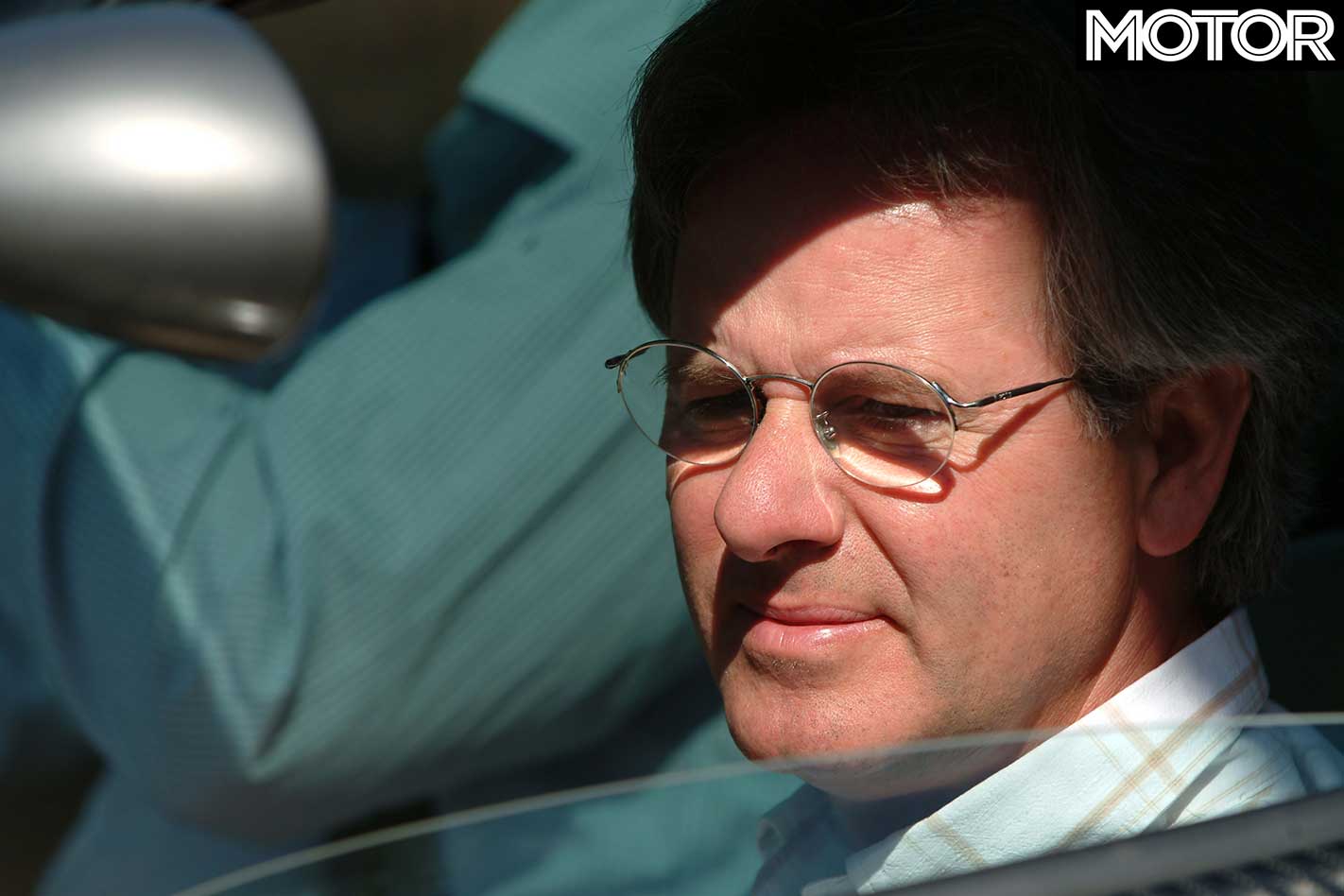
The engine, one of 100 built specifically for Pagani by Mercedes-Benz AMG – a 7.3-litre V12 – is then slotted into the mid-rear engine bay, jutting out through those signature fighter-plane quad-tips. Each Zonda is made to order, after a 30 percent deposit, and owners are invited to tour the factory and choose their paint, choice of seat trim, padding and colour. Want Antarctican Valley Yak Testicle Tan?
Then Pagani will do it, assuming you can provide a sample. Delete paint, also an option, and save yourself both the hassle of choice and 17kg. Weight is saved everywhere: where there isn’t carbon fibre, there’s aircraft aluminium – there’s even about one-fifth of the regular amount of sound deadening, just 5kg, used only in the most crucial areas.
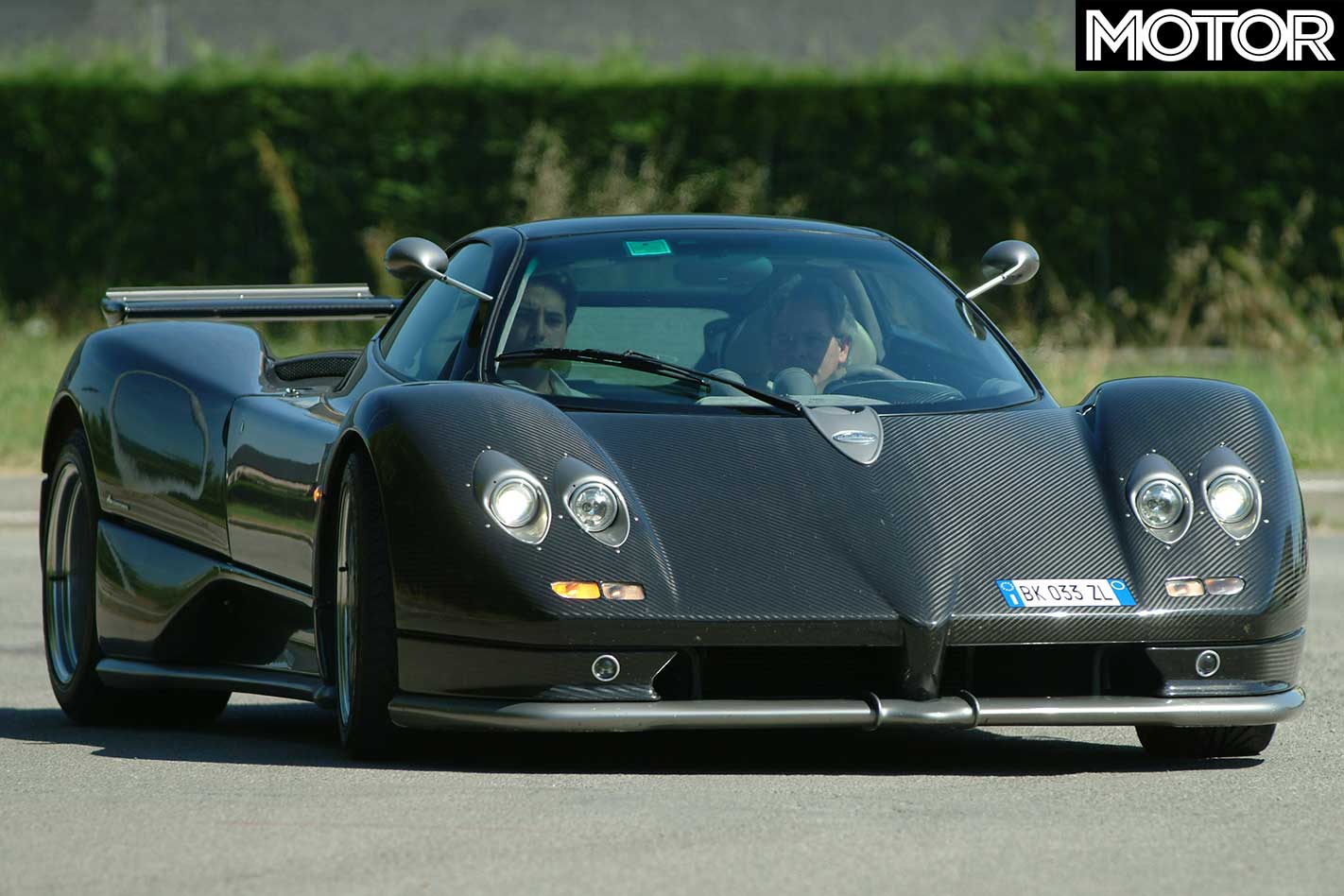
Buyers also get matching luggage, a construction/owner’s folder that lists any manufacturing defects (notably blank in the cars we viewed) and even made-to-measure shoes by the cobbler who also soles the Pope, adding an air of holiness to the Pagani.
Inside, the cockpit is hot and light, the view is like being in an FA-18, a feeling not discouraged by the circular exhaust tips. The factory air-conditioning, ducted through the carbon fibre ‘sprouts’, offsets the biting heat. It’s cramped, but comfortable – and would be even more so if it were ‘my’ bum grooves it had been padded for.
Most controls are solid and well weighted, like a Boxster. Not so the steering, which is a touch vague off centre. But it’s not as bad as the rear vision through its high, tiny mirrors.

A 390km/h speedo and custom made gauges combining analogue needles with digital temp and odo are clear and reveal something absolutely remarkable: 112,511km. This silver demonstrator, one of Pagani’s first Zondas, has endured countless magazine tests, potential customer test drives and such is the quality of build, it still feels and sounds as tight as a new one.
The interior is simple but elegant; there are flaws – creased rubber, imperfect stitching – signs of humanity rather than faults.
Time for fun. The starter motor whines for a second, until the big V12 fires into life at 3000rpm, before settling at a smooth 1000rpm. The shifter is pure and simple: six forward speeds and a clutch that pops progressively to reveal a mountain of torque. Pick any gear, and from 500rpm – lower than idle – the Zonda will pull cleanly.
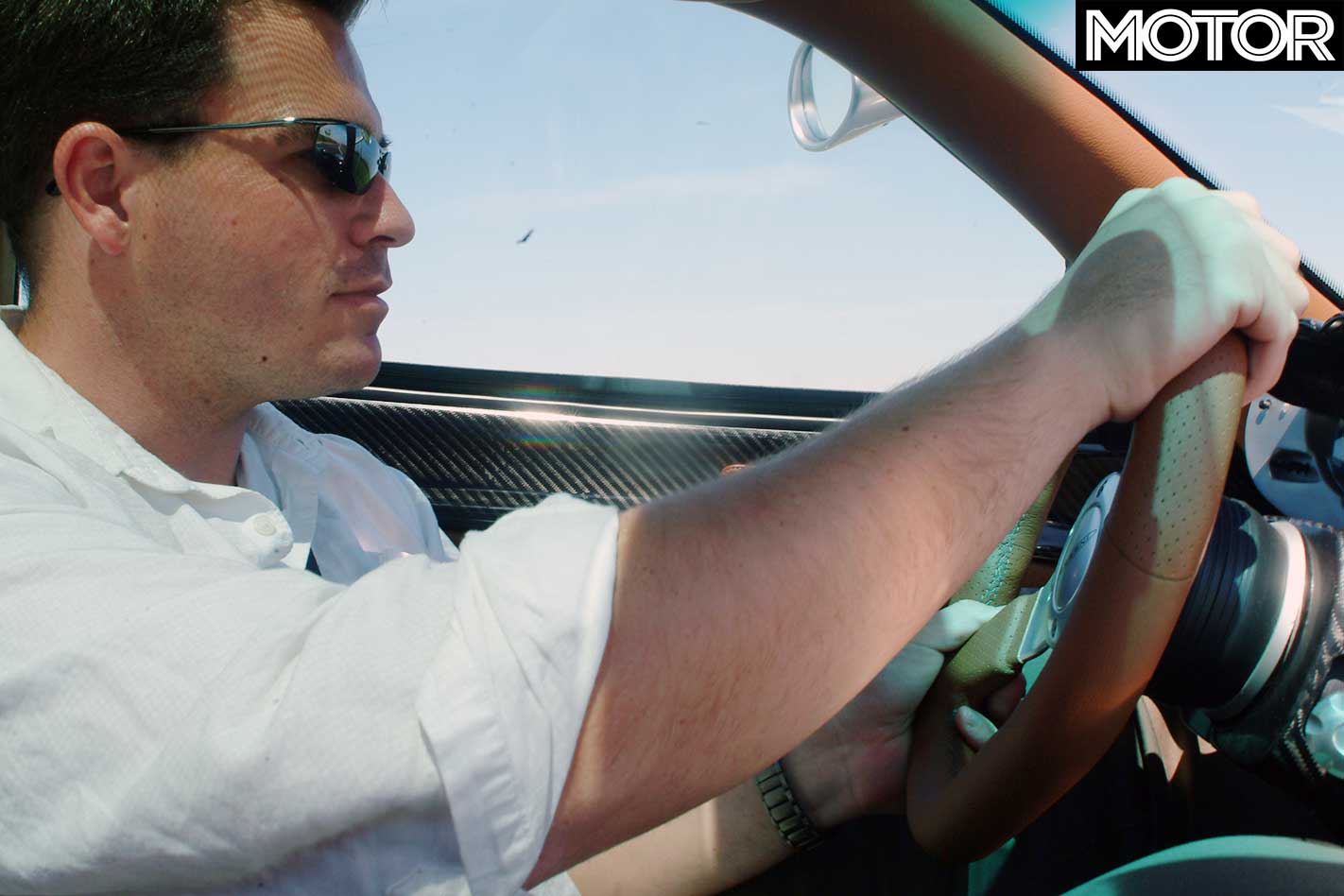
The engine is a dream, with a smooth, thrumming, urgency, like a mix-master stirring a thickshake. Plant it and all hell may as well break loose because the rear tyres certainly don’t. Massive Michelins grab the road and propel the Zonda into light speed; first to second gear is an instinctive reaction to pass 100km/h in 3.7 seconds, Pagani claims. There will be no testing today. Only official test drivers are allowed.
So the V12 bellows and shrieks through to the 7300rpm limiter in second gear. Only in third do you have time to regather and find out what the hell is happening. At three grand, it bulges torque, and picks up the pace at four, then again at five, where it hammers like a sports bike on some mission to outrun the speed of light – and all so seamlessly.
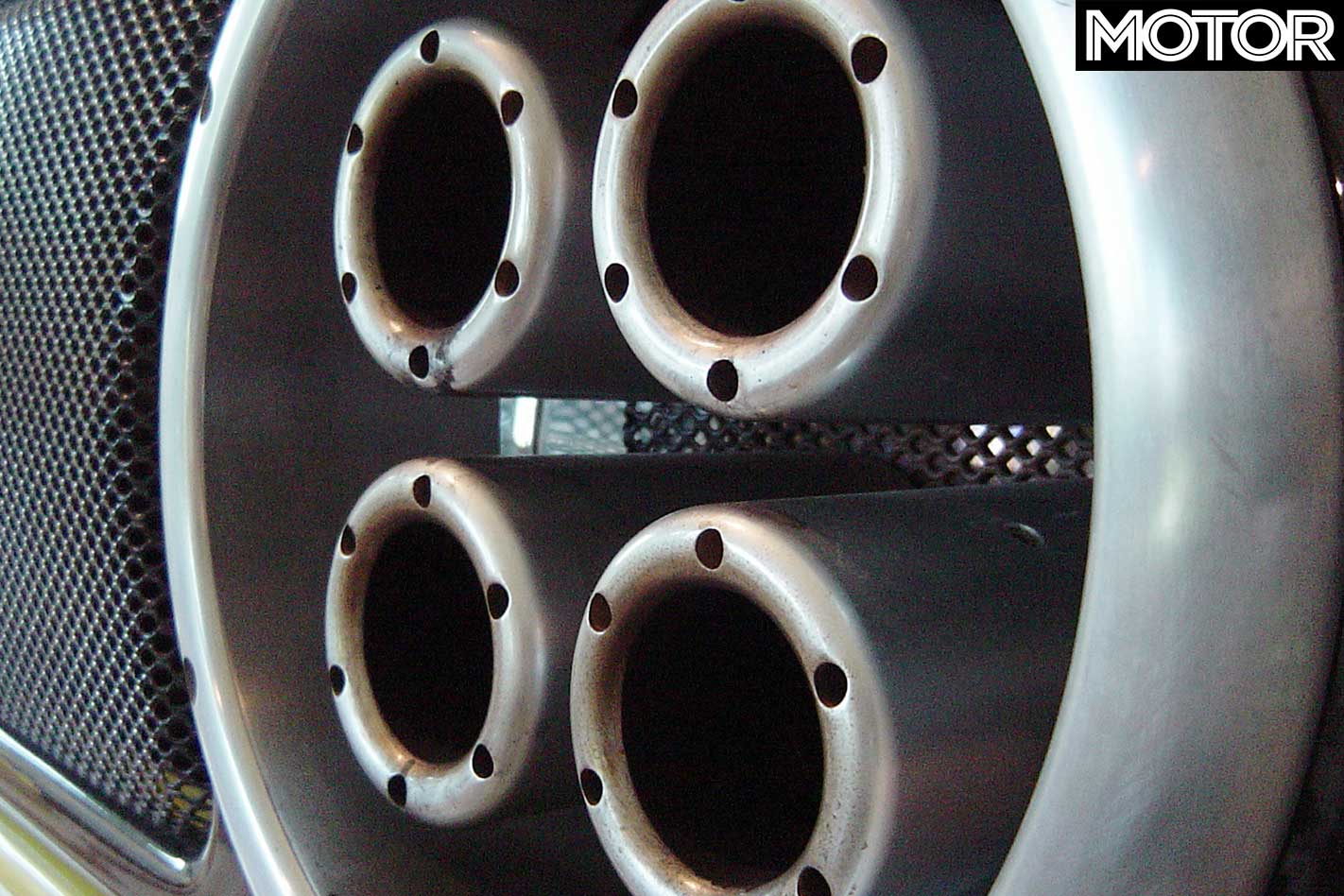
The shifter is light and clicky, like a Honda Civic, and the steering sharpens around Modena’s set-square angled hard lefts and rights. Lift and slam, and the engine belts out the kind of power and speed that only Lamborghinis, Ferraris and Porsches can rival. But none have the agility through the corners of the super-light, agile Zonda. Pagani proved the Zonda’s speed back in June 2002, when it lapped the Nürburgring in seven minutes and 44 seconds, in the wet.
And here’s the good news, after five years on sale, Pagani is coming to Australia, in right-hand drive. Motor Group Australia has secured the local distribution and the Zonda, in both Coupe and ($1.4m) Roadster, will be officially available just before Christmas.
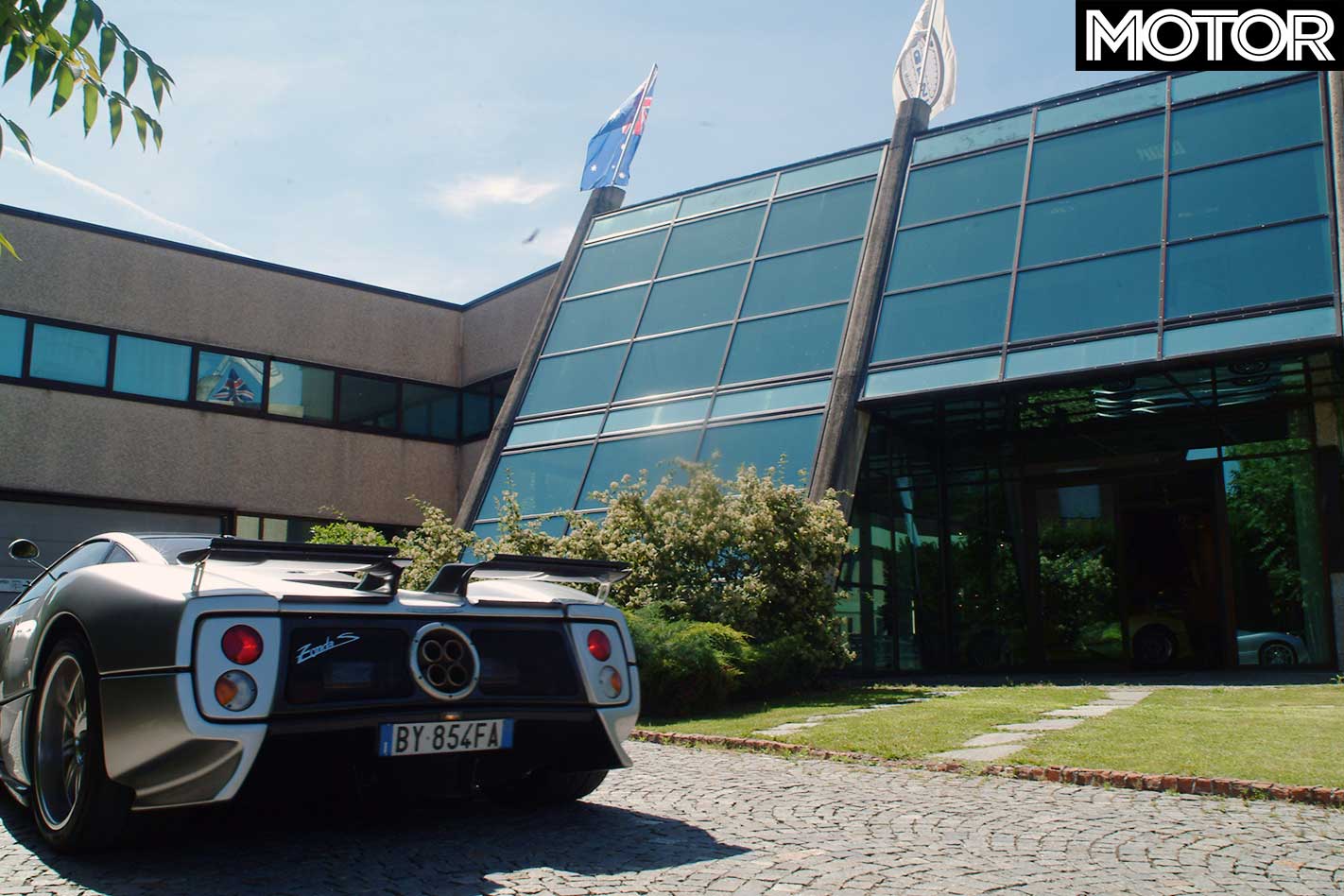
The Zonda isn’t as much a car as it is a work of beautiful art. It is the Gucci, the Tag Heuer, and the Rodeo Drive of cars. Its build and craftsmanship is so perfect, the drama and occasion and perfection often outweighs the fact it’s an insanely fast supercar. Park it in the living room, gaze at it, admire – we won’t mind.
Sure, the million-dollar price tag puts it in fantasy land, but at least put a Zonda on the dream car list for when the million dollar lottery numbers come up. Twice.

FAST FACTS 2004 Pagani Zonda C12 S
BODY: 2-door coupe DRIVE: rear-wheel ENGINE: 7.3-litre, DOHC, 48v, V12 POWER: 414kW @ 5900rpm TORQUE: 750Nm @ 4050rpm BORE/STROKE: 91.5mm x 92.4mm WEIGHT: 1280kg POWER-TO-WEIGHT: 323kW/tonne TRANSMISSION: six-speed manual SUSPENSION: double wishbone with pullrod and coil-over springs, anti-roll bar (f & r) L/W/h: 4395/2055/1151mm WHEELBASE: 2730mm BRAKES: 355mm cross-drilled & ventilated discs, four-piston calipers (f); 335mm cross-drilled & ventilated discs, four-piston calipers (r), ABS WHEELS: 18 x 10-inch (f); 18 x 12-inch (r) TYRES: Michelin Pilot Sport, 255/40ZR18 (f); 345/35ZR18 (r) PRICE: $1.2 million
PERFORMANCE: 0-100km/h: 3.7sec 0-400m: 11.8sec (claimed) Top speed: 336km/h (claimed)

